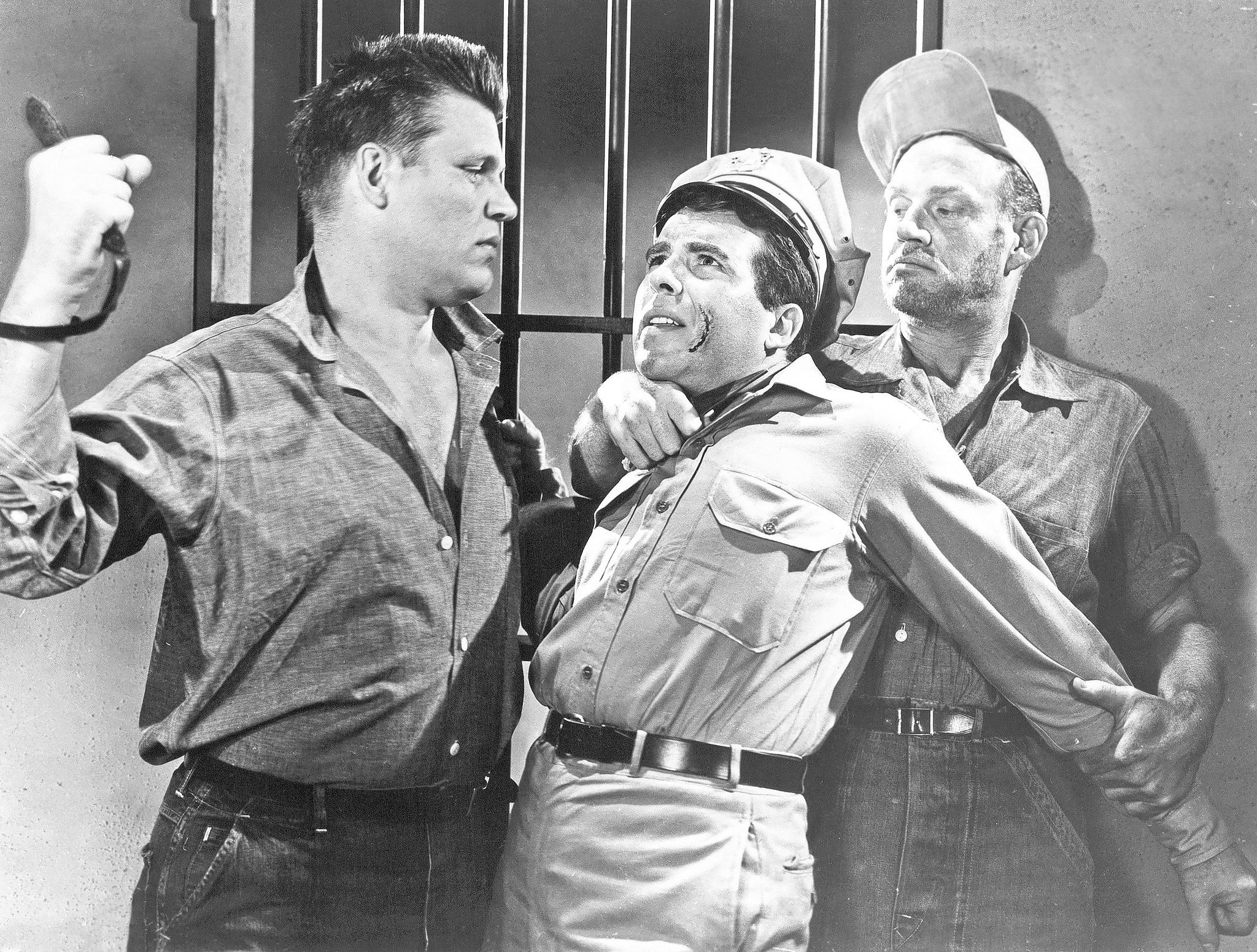
When I wrote about Nimród Antal’s Armored about a month ago, I lamented the fact that it sacrificed narrative leanness in the name of exposition and backstory. Don Siegel’s Riot in Cell Block 11 does not fall victim to that same trap. Clocking in at a cool 80 minutes, the film wastes little time delivering on the promise of its title. The prison riot starts proper not ten minutes in, and most of those minutes are dedicated to newsreel footage of gutted jails. A title card at the end of the opening credits thanks the warden, staff and inmates of the legendary Folsom State Prison. Unsurprisingly, the film trades in gritty, social-problem realism and is anchored by solid, dynamic direction and intense, meaty performances.
The film stars bulldog-faced character actor Neville Brand as James Dunn, the riot’s angry, charismatic ringleader. He is tired of the inhuman treatment he and his fellow solitary-confinement dwellers are receiving. So with the help of his right-hand man Crazy Mike Carnie (Leo Gordon, who has the nervy volatility of a brutish psychobilly Patrick Swayze lookalike), he starts a riot to make their voices heard. Ironing out the inmates’ demands during the operation is the moderate, down-to-earth Colonel (Robert Osterloh), who would rather not riot since he’s up for parole. Warden Reynolds (Emile Meyer) is sympathetic to the prisoners’ demands: he’s short-staffed and underfunded. Every time he deals with someone further up the pecking order, he is essentially asked to just deal with it. This ties into the core thematic tenant of the film: empathy and understanding die more the further away from the epicenter you get. The problems cease to exist if they aren’t seen.
Siegel’s strong compositions and deliberate lack of flair emphasize the dead ends and enclosures of the penitentiary. Prisons, especially one as iconic as Folsom, aren’t just architecturally predisposed for great photography; they’re great settings for this kind of social-realist potboiler. They’re fully hermetic environments where human variables are easily calibrated and charted. It’s easier to see how both human and non-human elements play off of each other in a confined space. But most of all, it’s a chance to look at the hierarchy of power structures and the abuse that is commonplace therein. Riot in Cell Block 11, like a few other Siegel jams, is explicitly about the relationship between power and violence. The convicts rioting and taking the guards hostage is the one way they can be heard. When the fuzz and the government respond in kind, the essentially bring guns to a knife fight where their opponents have no knives. Or guns. It’s lopsided and ugly and complicated and, from a narrative standpoint, utterly riveting.
Formally, Siegel is much more restrained than fellow brawny B-directors like Samuel Fuller, who likely would have given the material a little more rough-hewn expressionistic flair. But Siegel stages his scenes with zero ornamentation, as if any attempt to stylize it would soften the bluntness of the fury, the violence, or the politics. Its unadorned style makes Riot in Cell Block 11 a lean, mean gut punch punch of a film, and is all the better for it. The Criterion Collection, digging into the archives of Poverty Row, have given an underseen film the loving treatment it deserves (I hope that this starts a trend that will hopefully culminate in the restored version of Detour the world richly deserves). The transfer is stellar; the film’s stark black-and-white photography benefits from the new, crisper image. Special features include readings of Siegel’s writings by his son Kristoffer Tabori, and most interestingly, excepts from a 1953 radio documentary called The Challenge of Our Prisons. Pair this movie up with 12 Angry Men to have yourself a 50s liberal fuck-the-system double bill.
–
Directed by Don Siegel; written by Richard Collins; starring Neville Brand, Emile Meyer, Frank Faylen, Leo Gordon, and Robert Osterloh; 80 minutes.
Riot in Cell Block 11 is available:



 Derek
Derek
 Isabelle
Isabelle